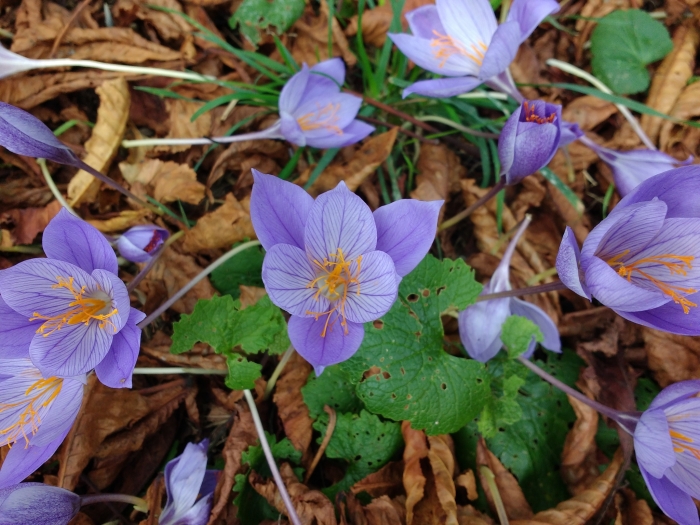Bieberstein’s Crocus
(Crocus speciosus)
Bieberstein’s Crocus (Crocus speciosus)
/
/

Y. Liu
CC BY 4.0
Image By:
Y. Liu
Recorded By:
Copyright:
CC BY 4.0
Copyright Notice:
Photo by: Y. Liu | License Type: CC BY 4.0 | License URL: http://creativecommons.org/licenses/by/4.0/ | Rights Holder: Y. Liu | Publisher: iNaturalist | Date Created: 2021-10-07T14:36:51-07:00 |











































Estimated Native Range
Summary
Crocus speciosus, commonly known as Bieberstein’s Crocus, is a deciduous perennial bulb native to the grasslands, open woodlands, and forest edges of the Caucasus region, as well as parts of Eastern Europe and Western Asia. It reaches a modest height of 10–15 cm (3.9–5.9 in) and is notable for its striking lilac flowers with paler colored throats and prominent dark veins, which bloom in autumn. The flowers are particularly showy due to their bright orange, much-divided styles that contrast with the petals. The foliage is grass-like, adding to its charm when not in bloom.
Bieberstein’s Crocus is valued for its ability to naturalize and increase rapidly, making it an excellent choice for meadow planting and informal garden settings. It is also used in rock gardens and borders for its autumn flowering period, providing a splash of color when many other plants are fading. This species is low maintenance, requiring minimal care once established, and is tolerant of a range of soil conditions, though it prefers well-drained soils. Full sun exposure is ideal to promote vigorous flowering. While generally pest-free, it can be susceptible to rot if kept too wet. Gardeners should be aware that all parts of the plant are toxic if ingested and can cause skin irritation on contact.CC BY-SA 4.0
Bieberstein’s Crocus is valued for its ability to naturalize and increase rapidly, making it an excellent choice for meadow planting and informal garden settings. It is also used in rock gardens and borders for its autumn flowering period, providing a splash of color when many other plants are fading. This species is low maintenance, requiring minimal care once established, and is tolerant of a range of soil conditions, though it prefers well-drained soils. Full sun exposure is ideal to promote vigorous flowering. While generally pest-free, it can be susceptible to rot if kept too wet. Gardeners should be aware that all parts of the plant are toxic if ingested and can cause skin irritation on contact.CC BY-SA 4.0
Plant Description
- Plant Type: Bulb
- Height: 0.3-0.4 feet
- Width: 0.225-0.3 feet
- Growth Rate: Moderate
- Flower Color: Purple
- Flowering Season: Fall
- Leaf Retention: Deciduous
Growth Requirements
- Sun: Full Sun, Part Shade
- Water: Medium
- Drainage: Medium
Common Uses
Bee Garden, Butterfly Garden, Deer Resistant, Fragrant, Groundcover, Low Maintenance, Potted Plant, Rabbit Resistant, Rock Garden, Showy Flowers, Street Planting
Natural Habitat
Grasslands, open woodlands, and forest edges
Other Names
Common Names: Herfstkrokus, Herfstkrokus
Scientific Names: , Crocus speciosus, Crocus speciosus var. caucasicus, Crocus tauricus,
GBIF Accepted Name: Crocus speciosus M.Bieb.